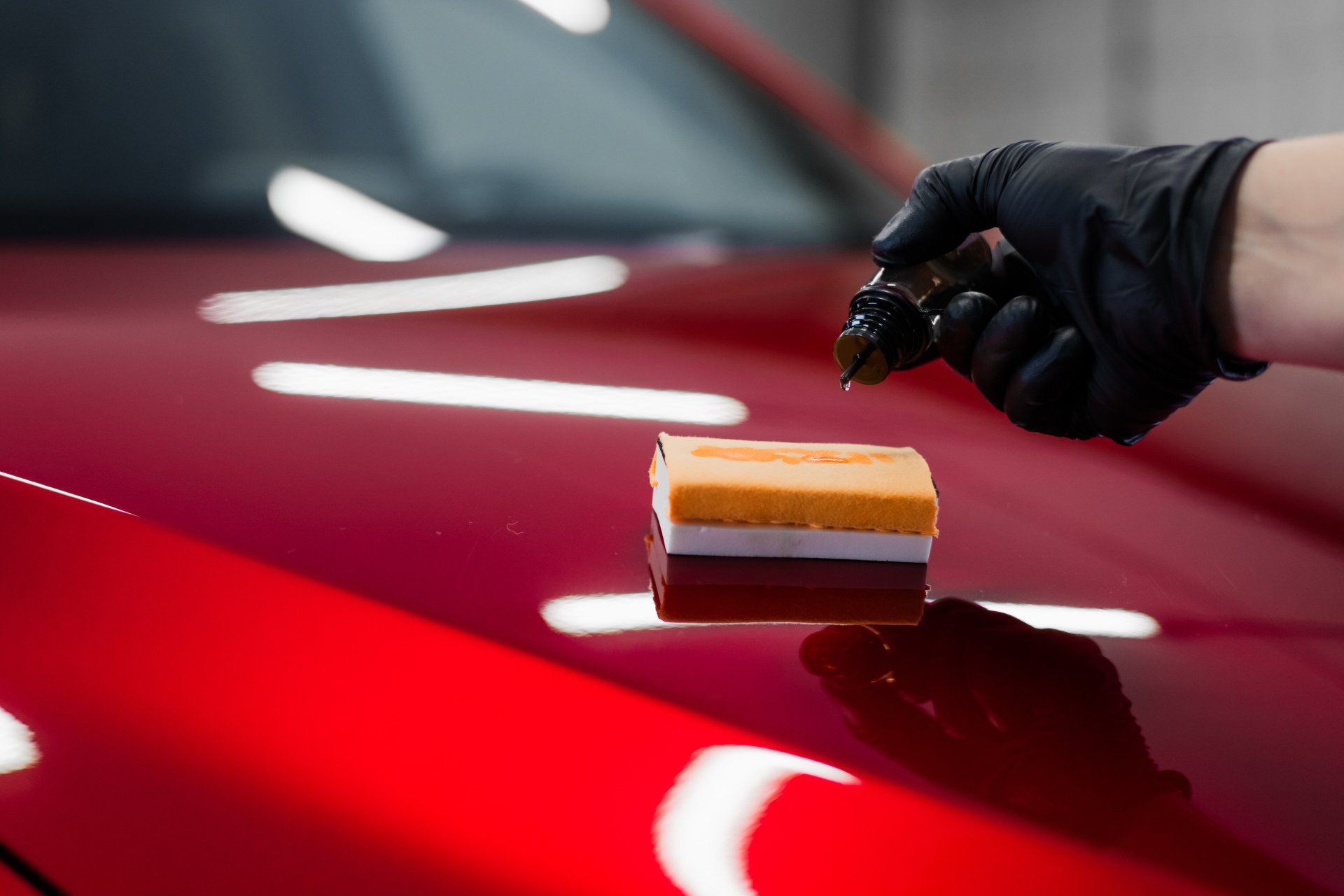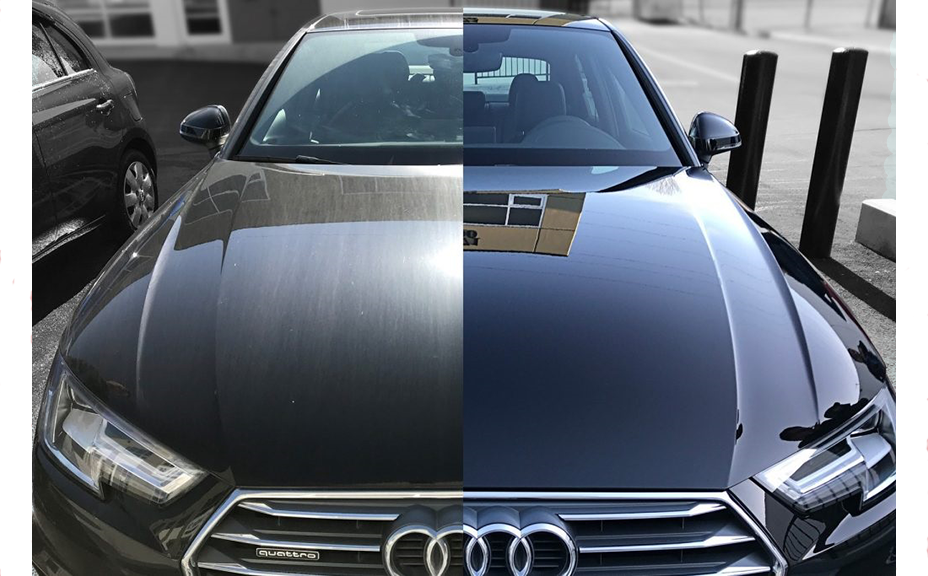Eight common questions about Ceramic Coating Newark answered
Checking out the Scientific Research Behind Car Ceramic Coating and Its Safety Features
The science of car ceramic coating presents an interesting research in innovative automotive defense. Made up primarily of silicon dioxide and polymers, these finishings develop a durable bond with car paint. This interaction boosts durability versus ecological dangers while providing hydrophobic benefits. The details of exactly how these finishes job and their lasting advantages continue to be much less comprehended. Ceramic Coating Newark. Unboxing these details exposes why ceramic layers are coming to be a preferred selection for lorry care
What Is Ceramic Coating?
Ceramic coating is a liquid polymer that chemically bonds to the surface area of a lorry's paint. This innovative protective layer boosts toughness and supplies premium resistance to environmental aspects. Unlike standard wax or sealers, which supply momentary defense, ceramic finishes create a durable guard that can stand up to harsh conditions such as UV rays, acidic impurities, and severe weather condition. When applied appropriately, the coating creates a hydrophobic surface area, triggering water to bead and slide off, which aids in keeping the automobile's cleanliness. Furthermore, it supplies boosted gloss and deepness to the paint, making the lorry show up more sleek and vibrant. The application process generally involves complete surface prep work, consisting of cleaning and sprucing up, to ensure peak bonding. Because of this, ceramic finishings are coming to be progressively prominent amongst car lovers and those seeking to protect their financial investments, assuring to maintain the vehicle's visual appeal while minimizing the frequency of maintenance.
The Composition of Ceramic Coatings
The detailed solution of ceramic coatings primarily consists of silicon dioxide (SiO2), which is originated from all-natural resources like quartz and sand. This vital element supplies the foundation for the coating's durability and protective qualities. Along with SiO2, ceramic finishes typically include different polymers and ingredients that enhance attachment, flexibility, and resistance to ecological variables. These substances work synergistically to produce a robust barrier versus contaminants such as dust, chemicals, and UV rays.Furthermore, some formulas integrate titanium dioxide (TiO2) or other nanomaterials, which can augment the coating's hydrophobic residential or commercial properties, causing improved water repellency. The exact structure can differ significantly among manufacturers, influencing efficiency and long life. Eventually, the mix of these elements finishes in a protective layer that not only boosts the aesthetic appeal of vehicles but additionally offers to prolong their life-span by securing the surface area from prospective damages.
Just How Ceramic Coatings Work
Comprehending how ceramic layers function involves exploring their chemical structure, which adds to their safety qualities. The application process is crucial for achieving optimal outcomes, while durability and toughness factors identify the coating's efficiency with time. Together, these elements highlight the advantages and efficiency of ceramic coverings for vehicle security.
Chemical Structure Explained
While lots of car owners look for resilient security for their vehicles, the chemical make-up of ceramic coverings plays a critical role in their effectiveness. These finishings mostly contain silicon dioxide (SiO2), which is derived from all-natural minerals. This compound creates a strong bond with the lorry's paint, creating a resilient, safety layer. Additionally, many ceramic layers include titanium dioxide (TiO2), boosting their hydrophobic properties and resistance to UV rays. The existence of polysiloxanes can better improve versatility and longevity. With each other, these components add to the coating's ability to ward off water, dust, and contaminants, while additionally providing a high-gloss surface. Recognizing this chemical foundation helps car owners value the durable defense offered by ceramic finishes.
Application Refine Overview
Applying ceramic finishes involves a precise procedure that assures perfect bonding and defense for the lorry's surface. Complete cleaning and purification of the car's outside are carried out to get rid of dust, grime, and previous waxes. This step confirms that the surface area is without contaminations that can hinder bond. Following this, the paint is often polished to improve clearness and get rid of any kind of blemishes. As soon as prepared, the ceramic coating is used in little sections utilizing an applicator pad, enabling uniform protection. The coating is then entrusted to treat, forming a solid chemical bond with the surface. Correct healing times and conditions are important, as they validate the coating attains its maximum performance and protective top qualities.
Durability and Durability Variables
Ceramic finishings are made to offer durable defense via their sophisticated chemical composition, which produces a durable obstacle versus ecological contaminants. The longevity of these coatings is influenced by aspects such as the thickness of the application, the top quality of the product, and the conditions under which the lorry is subjected. Premium ceramic coverings can last numerous years, withstanding scrapes, UV rays, and chemical stains. Correct maintenance, consisting of routine cleaning and periodic reapplication, can better improve long life. Furthermore, ecological elements like environment and exposure to toxins can impact the life-span of the coating. Overall, when used and maintained properly, ceramic coatings use extraordinary resilience, making them a prominent option for car enthusiasts seeking to preserve their vehicle's appearance.
Hydrophobic Features and Water Repellency
Hydrophobic properties are a trademark of quality car ceramic finishes, considerably enhancing the automobile's surface area performance. These finishings produce a molecular bond with the car's paint, causing a surface area that wards off water properly. When water enters into contact with a ceramic-coated surface, it beads up and rolls off, lessening the quantity of fluid that continues to be on the paint. This behavior not only adds to a visually pleasing look yet additionally decreases the build-up of pollutants such as dust, gunk, and road salts.The enhanced water repellency results in less complicated cleaning and upkeep, like it as less effort is required to remove unwanted substances. On top of that, the hydrophobic nature of ceramic layers assists in avoiding water places, which can mar the surface of uncoated surface areas. Generally, the consolidation of hydrophobic buildings in ceramic layers plays an essential duty in keeping the lorry's excellent look while simplifying maintenance.
Defense Versus Scratches and UV Damages
Car ceramic coatings supply substantial protection against scrapes and UV damages. The scratch resistance mechanism creates a durable layer that soaks up effects, while the UV protecting benefits aid keep the automobile's paint integrity with time. With each other, these functions add to a longer-lasting and aesthetically enticing finish.
Scrape Resistance Device
Utilizing sophisticated modern technology, ceramic coatings offer a durable guard against scrapes and UV damage, enhancing the durability and appearance of vehicle surface areas. The scrape resistance device of these coverings is connected to their distinct molecular structure, which creates a resilient bond with the vehicle's paint. This bond produces a hard, protective layer that can soak up effects and resist abrasions. In addition, the smooth surface area of the coating decreases rubbing, making it challenging for contaminants to stick and cause scrapes. The chemical structure of ceramic layers frequently consists of nanoparticles that strengthen the protective layer, further enhancing its strength. Vehicles treated with ceramic coatings display significantly improved scrape resistance contrasted to typical wax or sealants, ensuring an excellent finish over time.
UV Protecting Advantages
The safety high qualities of ceramic coverings expand beyond scrape resistance to include substantial UV protecting advantages. These finishings develop a robust obstacle that mirrors dangerous ultraviolet rays, securing the automobile's paint and underlying materials. Prolonged exposure to UV radiation can bring about fading, oxidation, and damage of the paint finish. By integrating ceramic coatings, lorry owners can effectively minimize these threats, protecting the aesthetic allure and integrity of their automobiles. In addition, the UV obstructing residential or commercial properties add to improved longevity, minimizing the frequency of painting and maintenance. Inevitably, the integration of ceramic finishes provides a thorough service for securing lorries from the destructive effects of sunlight exposure, making sure a sustained, lively appearance gradually.
The Longevity and Upkeep of Ceramic Coatings

Frequently Asked Concerns
Can Porcelain Coating Be Applied to Any Kind Of Kind Of Car?
Ceramic coating can be put on numerous sorts of vehicles, consisting of cars and trucks, vehicles, and motorcycles. However, surface preparation and compatibility with particular products are vital for suitable attachment and effectiveness of the coating.
How Much Does Ceramic Coating Generally Cost?
Ceramic coating usually costs between $500 and $2,000, depending on variables such as lorry dimension, coating high quality, and expert application. The financial investment can give long-lasting protection and enhance the vehicle's look gradually.

Is Expert Application Necessary for Finest Results?
The necessity of expert application usually relies on wanted outcomes. Specialists typically assure proper surface area prep work and application methods, leading to ideal bonding and long life of the coating, which may be challenging for unskilled individuals to attain.
Can Porcelain Coatings Be Removed or Fixed?
Ceramic finishings can be removed or repaired, though the process may require specific solvents or methods - Ceramic you can try this out Coating Newark. Appropriate removal is necessary to avoid damages to the underlying surface, highlighting the relevance of expert assistance for suitable outcomes
Exactly How Does Porcelain Coating Compare to Standard Wax?
The contrast between ceramic coating and traditional wax exposes read here that ceramic coatings use superior longevity, improved defense against ecological impurities, and longer-lasting shine, while wax calls for more regular application and provides less general resistance to damage.